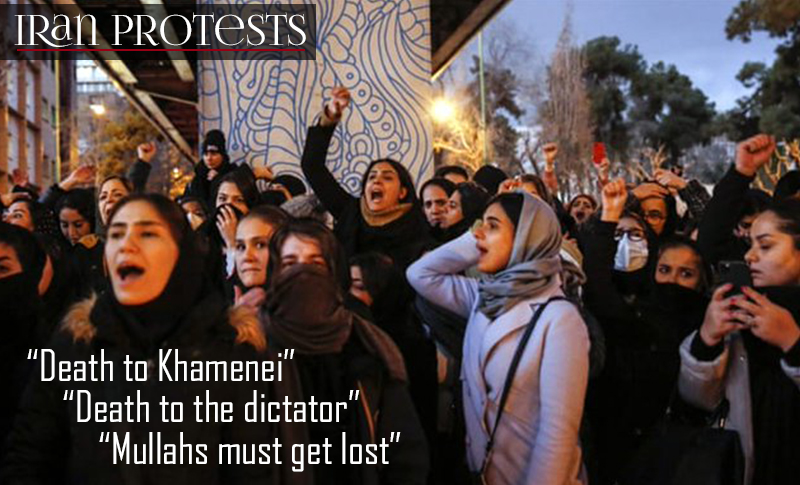

By Atousa Pilger
Iran saw 3,530 recorded protest in 2019, according to Iranian Resistance sources, which works out at an average of 294 protests a month and 10 protests a day.
Of these 3,530 protests, 265 were linked to the nationwide November uprising, which began after the regime tripled the price of fuel overnight. The regime’s crackdown on the protests, which spread to 191 cities and 30 provinces, left 1,500 protesters dead, 4,000 wounded, and 12,000 arrested.
Reuters confirmed in a special report on December 23, 2019 about the deadly crackdown on November nationwide protests in Iran the death toll of 1500 that was announced by the People’s Mojahedin Organization of Iran (PMOI) on December 15, 2019.
The protests began on November 16, despite horrific weather, and quickly became a movement for regime change rather than just a protest over the economy.
Protesters demanded that President Hassan Rouhani resign before calling for the death of Supreme Leader Ali Khamenei.
Among other things, they chanted:
- “Iranians will die rather than surrender”.
- “Death to Khamenei”
- “Death to the dictator”
- “Mullahs must get lost”
They also attacked regime buildings, such as police stations, governor’s offices, Islamic Revolutionary Guards Corps (IRGC) bases, IRGC owned chain stores, seminaries, and offices of the heads of Friday prayers, but not those owned by ordinary Iranians.
The protests were strongest in Shahriar, Shahre Qods, Isfahan, Behbahan, Shiraz, and Tehran, but Iran imposed an internet blackout to try and stop the world from finding out about the protests and the crackdown. But the world did find out and was rightfully horrified.
However, despite their major impact, the nationwide protests were not the only protests in 2019. Here, we will look at some more.
The fury and anger of their friends in universities and cities across the country confirmed that the people of Iran will neither forgive nor forget. They will not calm down, but will cry out: The people of #Iran do not want Iran’s ruling dictatorship. #UkrainianPlane pic.twitter.com/sh5YQNVzrv
— Maryam Rajavi (@Maryam_Rajavi) January 13, 2020
Workers
Workers held 1,411 protests in 2019, which works out to an average of 118 protests a month and 4 protests a day. This is not surprising because they can barely make ends meet, with their meagre wages, if paid, are much less than the poverty line in Iran.
They protested long-delayed paychecks, widespread layoffs and the privatization of companies.
Teachers
Teachers held 350 protests in 2019 with an average of 29 per month. They demanded the release of arrested teachers, free education, education justice, increased pay, a comprehensive insurance policy, and better school facilities.
Defrauded creditors
Defrauded creditors held 338 protests in 2019, averaging 28 protests per month. The creditors were demanding the return of their stolen savings from mostly IRGC affiliated credit institutions.
Students
Students held 108 protests in 2019, with the most significant being for Student Day on December 7. They commemorated fallen protesters, demanded the release of arrested students, and condemned the regime’s brutal crackdown.
Pensioners
Iranian pensioners held 71 protests in 2019, mainly over their dire livelihood conditions caused by their low pensions, and lack of comprehensive health insurance.
Farmers
Farmers held 75 protests in 2019, mainly over denial of their water rights, which leaves them unable to water their farms.
Flood Victims
Flood victims held 77 protest gatherings following the severe floods that began in mid-March and destroyed 25 provinces in Iran, mainly because of the regime’s lack of aid to flood-stricken areas.







